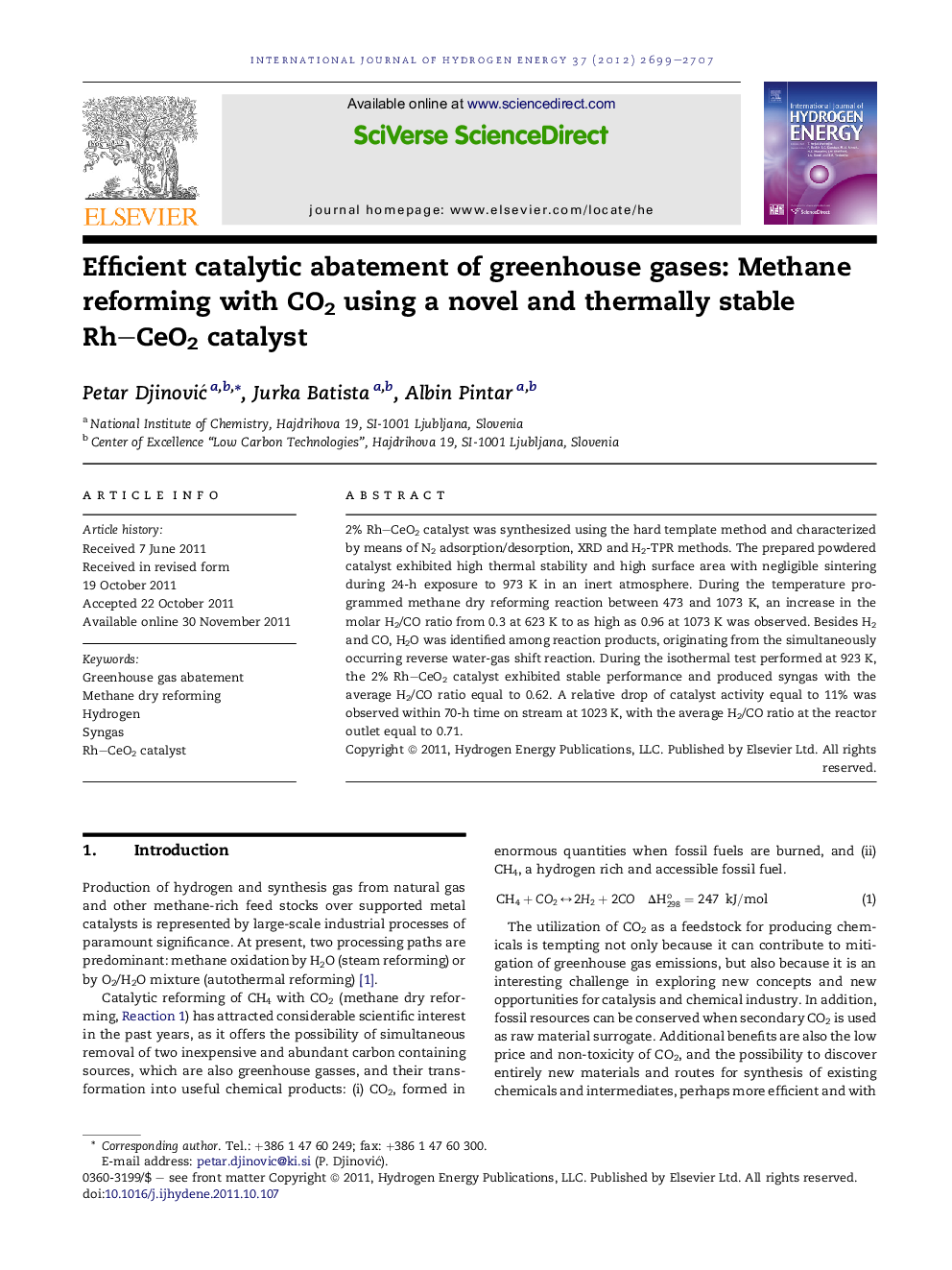| Article ID | Journal | Published Year | Pages | File Type |
|---|---|---|---|---|
| 1271692 | International Journal of Hydrogen Energy | 2012 | 9 Pages |
2% Rh–CeO2 catalyst was synthesized using the hard template method and characterized by means of N2 adsorption/desorption, XRD and H2-TPR methods. The prepared powdered catalyst exhibited high thermal stability and high surface area with negligible sintering during 24-h exposure to 973 K in an inert atmosphere. During the temperature programmed methane dry reforming reaction between 473 and 1073 K, an increase in the molar H2/CO ratio from 0.3 at 623 K to as high as 0.96 at 1073 K was observed. Besides H2 and CO, H2O was identified among reaction products, originating from the simultaneously occurring reverse water-gas shift reaction. During the isothermal test performed at 923 K, the 2% Rh–CeO2 catalyst exhibited stable performance and produced syngas with the average H2/CO ratio equal to 0.62. A relative drop of catalyst activity equal to 11% was observed within 70-h time on stream at 1023 K, with the average H2/CO ratio at the reactor outlet equal to 0.71.
Graphical abstractFigure optionsDownload full-size imageDownload as PowerPoint slideHighlights► Hard template synthesis method produced thermally stable 2% Rh–CeO2 catalyst. ► Strong interactions exist between the dispersed Rh and CeO2 support. ► A H2/CO molar ratio of 0.96 was obtained at 800 °C. ► Negligible catalyst deactivation was observed during stability test at 650 °C.
